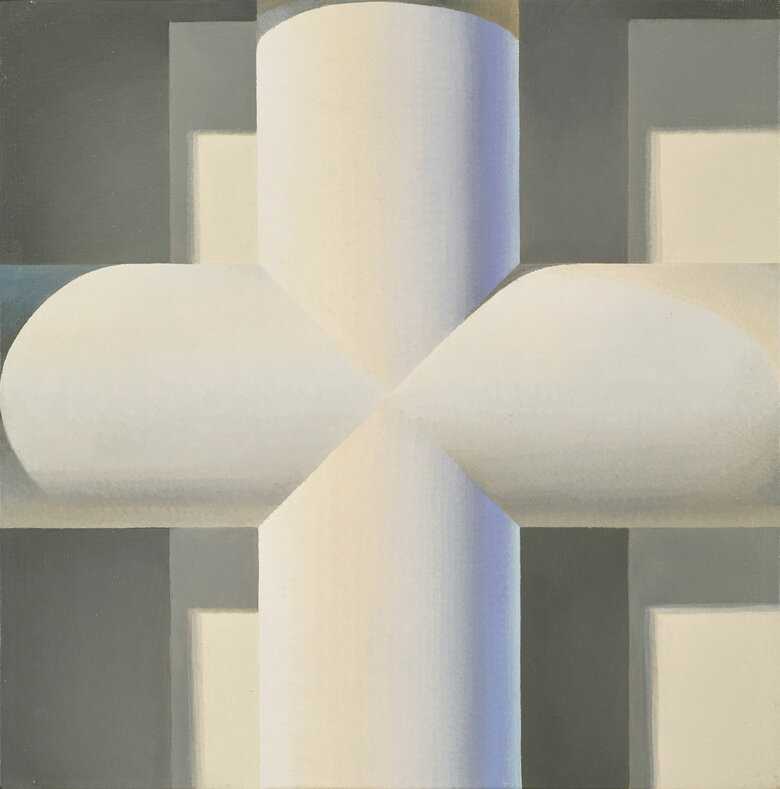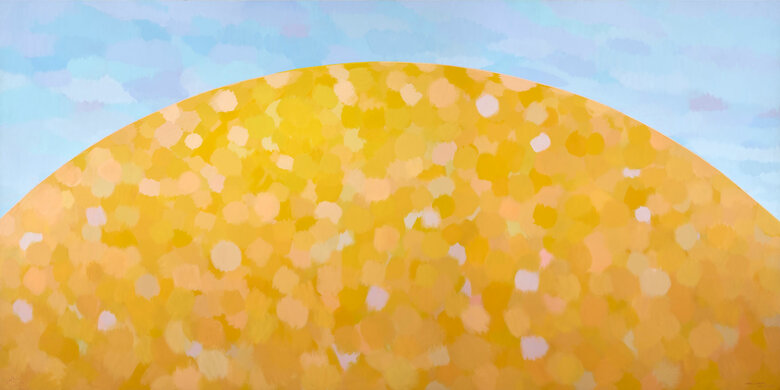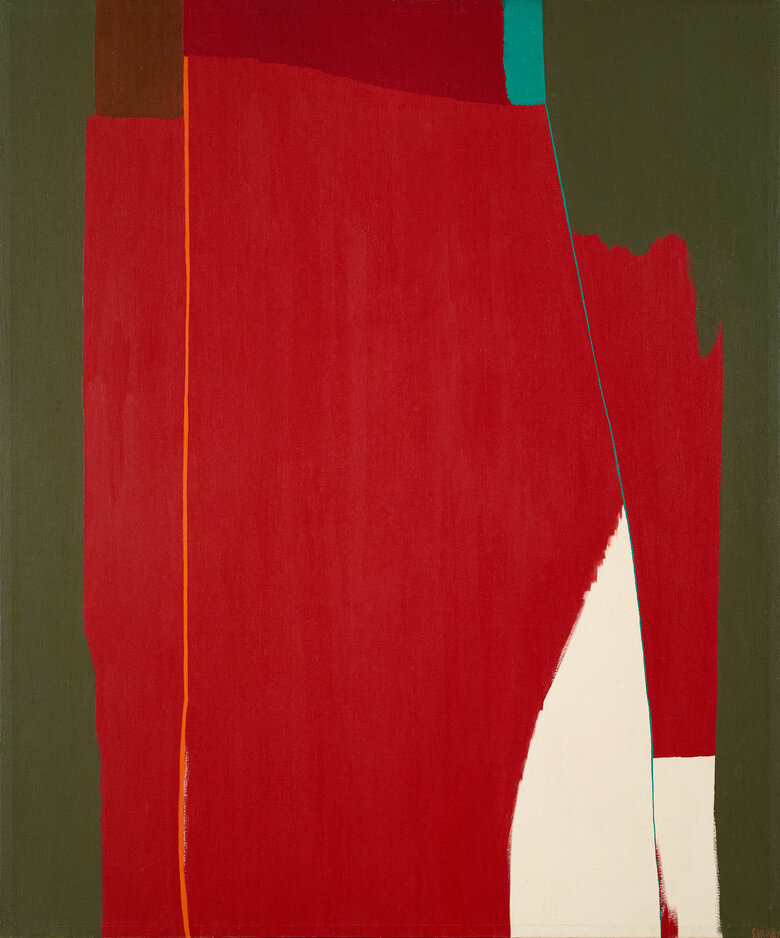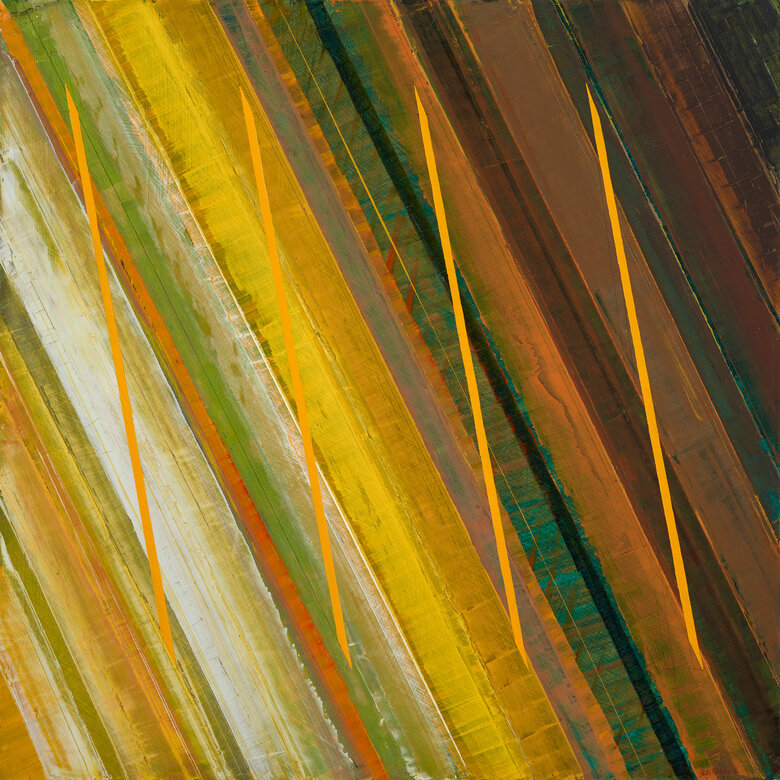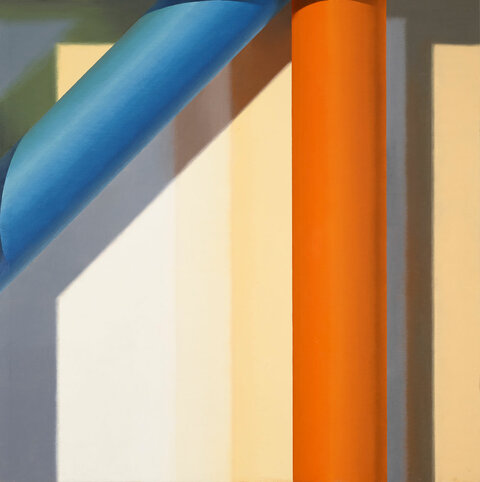Untitled, 1960, an oil on canvas painting, is one of Halaby’s earlier academic compositions. Halaby’s fascination with the reflection of light on objects and its exposure across space was apparent during the early years of her artistic journey.
As a study of form and light, Halaby’s application emphasizes the conversation between the two. The ‘Mobius strip’ or helical metal band-like objectgracefully traverses between the lower and upper part of the square canvas, casting reflections of light and shadows within itself while the subtle use of well-valued and toned white and grey hues imbue the element with an authentic, reflective stainless-steel metal quality. The painting’s smooth background shares a similar color palette with the object and serves as a unifying universe within the canvas. However, the dynamism of the piece is brought forward through the alternating smooth and rough transitions of paint applications and the blending techniques between white, grey, light blue, and pink color values across the top and bottom half of the canvas.
Along the surface of the painting, the spiral lines create the illusion of movement as they change between precision at their points of separation and murkiness at their points of merger. Soft white-yellowish touches of paint illuminate the brightest part to accentuate the reflection of light. The shimmer of the metallic sheen is emphasized by applying a greyish-pink color that is gradually subdued by a soft blue and blended into the slopes of the cascading object. The brightness of the top part is brought into focus through the darker blues and grayish tones in the lower section. Halaby’s technique adds depth and form to the artwork, while her interruption of the folds at the painting's upper and lower peripheries creates a sense of disorientation.
Halaby’s academic painting highlights her early stages of evolution as an artist, especially her mastery of technique. It is best considered a stepping stone for her lifetime exploration and creation of "her own language of abstraction."[1]. The painting’s composition clarifies the effect that early modern movements, particularly Bauhaus, Russian Constructivism, and American Abstract Expressionism, had on her understanding of material, shape, and color.
However, it is also important to note the effect that Halaby ascribes to her formal education. In one of her reflections on her university education, Halaby highlights the importance of specific courses she had attended[2]: one had prioritized the Munsell System and color harmony, and the other focused on the science behind optics and light. In addition, between 1959-1960, the period this piece was painted, Halaby was first introduced to American Abstract Expressionism through visiting professors at her university.
The amalgamation of these influences all come together in this study and form the foundational alphabet that would soon coalesce into Halaby’s language of abstraction. The growth can be traced to her future series of geometric still-life paintings she created during the mid-1960s.
Notes:
Not Signed

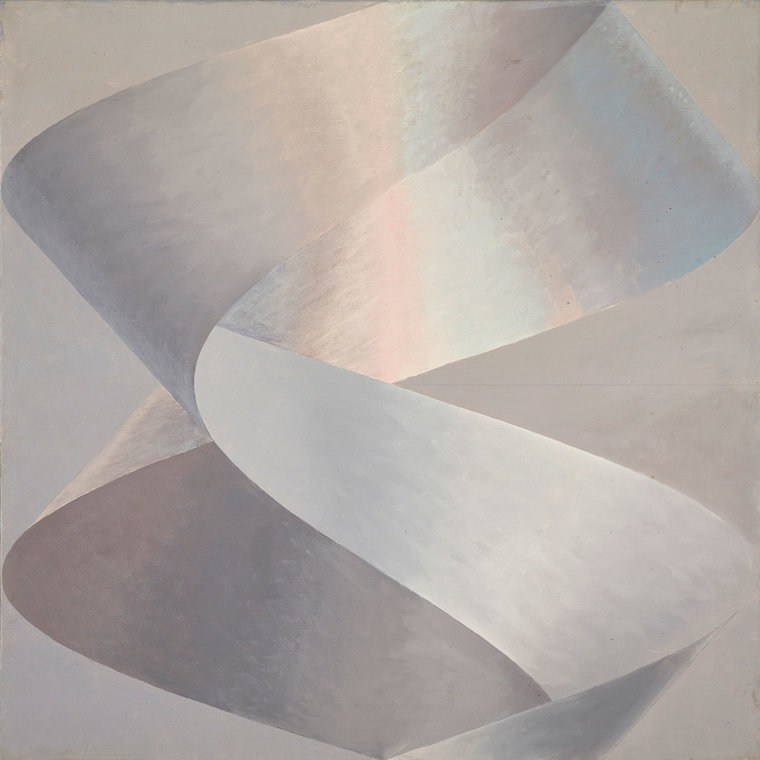

-SamiaHalaby-Front.jpg)
-SamiaHalaby-Front.jpg)
